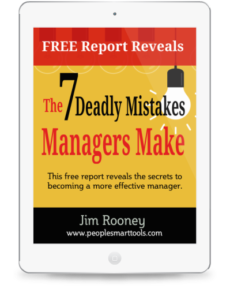This guest article is by author, Bill J. Bonnstetter. He is the chairman of TTI Success Insights and founder and chairman of Target Training International. He is considered one of the pioneers in the assessment industry because of his significant contributions to the research and study of human behavior. @bbonnstetter
Job Matching Allows You to Reinvent the Way You Find Talent
One fact I’ve found most people are stunned by is that, contrary to popular belief, good people are easy to find.
How do I know this? It’s because I stopped hiring long ago and instead approached finding talent entirely different. And you can, too.
First, you have to let go of the concept of hiring and the baggage that comes with it: The tedious process of sifting through hundreds of random resumes, hours of interviews and crossing your fingers that you’ve found the right candidate in the end.
Now that you’ve reset your preconceptions about hiring, you can now begin to job match.
You see, we’ve been going about hiring all wrong for decades, clinging to practices that may have worked once upon a time but are no longer relevant today. With real science, modern technology and an understanding of the entire person, we now have the power to do what I like to call job matching.
Job matching is a whole-person approach that takes into account what any and every job requires in terms of behaviors, motivators and competencies, and matches candidates with those same inherent abilities and skills with a job that they will feel rewarded and fulfilled in.
Hiring is offering a job. Job matching is pairing people with the next step in their career. See the difference?
But in order to truly embrace the concept of job matching, you must understand the myths that imprison business owners in their old ways of hiring. The most common, most widely disseminated beliefs are:
Myth #1: The hiring process starts with the job description.
False! While most use a job description as step one, they really need to look at key accountabilities instead. By looking at key accountabilities specific to the job, you’re outlining what it will take for that person to be successful at the job and how they will impact the organization.
Myth #2: I am unbiased when I hire.
False! Even if you consciously attempt to be objective, it is nearly impossible not to draw on your past experiences and perceptions to make judgments. Biases are inevitable, and that’s why an objective, unbiased applicant screening process needs to be in place to screen for you.
Myth No. 3: My hiring process isn’t perfect, but it’s good enough.
Probably not. As organized as you may be, operating without a talent management system can make your company susceptible to liability with even the slightest oversight. Resumes get lost in the shuffle, but by law you are required to retain all hiring materials for seven years.
Myth No. 4: Of all of the resumes received, we ended up with the best candidate.
Maybe, but maybe not. There’s no way to know this answer for sure without assessments viewed under the lens of a job benchmark. This is why the screening part of hiring is crucial; it doesn’t allow mismatched candidates to get to the job interview stage, where it’s easier for biases to creep in. A Fortune 500 company we work with estimated it could have eliminated 97 percent of its bad hires, had the company screened better in the beginning. The key to avoiding bad hires is to never interview a candidate who failed the screening process.
Myth No. 5: Hiring is a time-consuming, money pit.
False! It does not have to be. Assessment-based screening systems programmed to identify job-based matching to a person’s core behaviors, motivations and inherent skills will transform your hiring into a talent match experience that is less time-consuming and cost-effective. What could you do with your extra time if you didn’t spend it on hiring others with mediocre results?
Myth No. 6: Hiring tools are just used for hiring.
False! Use assessments to provide a new hire’s foundation to on-boarding, job-related training, skill development and leadership development. When it’s time for an annual review, use their assessment to chart a growth plan that is job related.
When you job match, rather than hire, you reinvent the way you find talent. You hire the whole person and scrap the needle-in-the-haystack approach. Instead, the best job-matched candidates reveal themselves based on assessment results of behaviors, motivators, skills and acumen.
It turns out, good people are easy to find — with the right tools in place.
Ready to learn more about job matching, instead of hiring? I invite you to visit TTITMP.com to learn more about a new way of finding talent.



